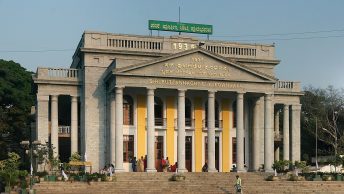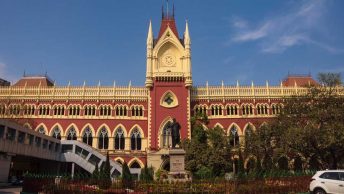On 3rd January 2023, a Constitution Bench of the Supreme Court delivered a judgment in Kaushal Kishore v. State of U.P., W.P. 113/2016 (“Kaushal Kishore”) having grave implications on the freedom of speech. The bench was set up to clear the air on some fundamental inconsistencies in the Supreme Court’s jurisprudence on free speech. In this piece, I suggest that the judgment creates even more confusion than what it started out with.
Background
The genesis of the dispute lay in a statement made in 2016 by Azam Khan, then Minister for Urban Development in the State of Uttar Pradesh, in the context of certain allegations of rape made by a survivor. It was said that the allegations are a “political controversy only and nothing else”. After this statement was made, the Petitioner—the survivor’s father—approached the Supreme Court inter alia to hold the Minister accountable for his statements.
In constitutional terms, the issue was whether the Minister’s freedom of speech under Art.19(1)(a) can be curtailed by invoking the survivor’s right to dignity under Art.21. There are two possible approaches to this issue. The first approach treats the Minister as a purely private person, given that he made these statements in his individual capacity. The second approach treats him as a State actor—or, at least, a person enjoying the State’s tacit support. The Court addressed both approaches. I limit this piece, however, to the Court’s findings under the first approach.
The issues and their relevance
The matter was referred to a Constitution Bench on 05.10.2017 along with certain formulated questions. Eventually, however, the Constitution Bench formed its own questions on 24.10.2019. The two main questions read:
- “Are the grounds specified in Article 19(2) in relation to which reasonable restrictions on the right to free speech can be imposed by law, exhaustive, or can restrictions on the right to free speech be imposed on grounds not found in Article 19(2) by invoking other fundamental rights?”
- “Can a fundamental right under Article 19 or 21 of the Constitution of India be claimed other than against the ‘State’ or its instrumentalities?”
These questions are drafted aptly. If the Minister is a purely private actor, then to enforce the survivor’s Art.21 right against him, the Court must first conclude that Art.21 is enforceable against private actors [Question 2]. This would raise a conflict between the Minister’s right under Art.19(1)(a) and the survivor’s right under Art.21. Then, the Court must find that Art.21 is available as a ground to restrict the right under Art.19(1)(a)—over and above the grounds listed in Art.19(2) [Question 1].
These questions required an authoritative pronouncement because of a conflict among earlier Supreme Court judgments. On the one hand, several Constitution Benches of the Supreme Court (including a six-judge bench) have held that Art.19(2) provides an exhaustive list of grounds for restricting speech. In Sakal Papers, five judges specifically held that one’s free speech cannot be restricted merely to promote another’s rights. Overall, this set of judgments is clear and straightforward.
On the other hand, some judgments hold that when the freedom of speech of one person “conflicts” with another person’s fundamental right, principles of “balancing” and “harmonious construction” can be applied to restrict free speech, so long as the other person’s right has “equal weight” as the freedom of speech (the premise being that a lesser right would simply get trumped by free speech, and vice versa). E.g., the State can prevent citizens from protesting if the protest impedes on other citizens’ right to move freely under Article 19(1)(d). Art.19(1)(a) has also been held as not including a right to use loudspeakers because they cause noise pollution and violate Art.21. A Constitution Bench has explicitly held that Art.21, and the principle of fair trial embedded in it, operate as a ground of restriction on Art.19(1)(a).
What makes this idea of “balancing” complex is a third set of judgments. In P.D. Shamdasani and Vidya Verma, the Constitution Benches held that the rights under Art.19 and Art.21 are vertical and cannot be enforced against non-State actors. As I have argued earlier, you cannot “balance” two vertical rights, for balancing would occur only when two rights conflict, and two vertical rights cannot conflict. Therefore, the concept of balancing assumes that the right conflicting with free speech is horizontal, i.e., enforceable against state and non-state actors. E.g., if Art.19 and Art.21 were both vertical, they would merely imply that the State cannot restrict one’s free speech, and that the State cannot take away another’s life and personal liberty (without constitutional justification). It would thus be impossible for the first person to infringe the second person’s Art.21 rights, whether through speech or otherwise.
Inconsistent findings
Answering Question 1, the Court reaffirmed its earlier judgments holding that Art.19(2) contains an exhaustive list of the grounds to restrict free speech. The Court found that Art.19(2) is “comprehensive enough to cover all possible attacks on the individual, groups/classes of people, the society, the court, the country and the State” (¶28), and so “no further restriction need [sic.] to be incorporated” (¶32). The Court also noted the holding in Sakal Papers that free speech cannot be restricted “even for securing the better enjoyment of another freedom” (¶28). Importantly, the Court also found that Art.19(2) strictly requires a “law” as a prerequisite for restricting speech, and a “law” can only be made by the Legislature—neither by the Executive nor by the Judiciary (¶33). Therefore, there is no question of the Court imposing any restrictions on free speech over and above the grounds listed in Art.19(2).
So far so good. But somewhere around Para 39, the Court makes a sudden u-turn. It first makes a manifestly wrong comment about Sakal Papers: “In Sakal Papers the conflict was neither between one individual’s fundamental right qua another individual’s fundamental right nor one fundamental right qua another fundamental right of the same individual. It was a case where a restriction validly made upon a fundamental right was held invalid qua another fundamental right of the same individual” (¶39). Then, declaring that individuals must respect each others’ fundamental rights (¶40), the Court cites the previous instances where free speech was restricted through a “balancing” exercise (¶43), and announces—in an astonishing ipse dixit—that “whenever two or more fundamental rights appeared either to be on a collision course or to be seeking preference over one another, this Court has dealt with the same by applying well-established legal tools” (¶44). And in the immediately next sentence, the majority holds—as if completely forgetting what it just wrote—that no restrictions other than those mentioned in Art.19(2) can be imposed on free speech “under the guise of invoking other fundamental rights” (¶44, 45). I see no way to reconcile these conflicting sentences. Either the “balancing” exercise by invoking other fundamental rights was permissible or it was not. Either the Court can impose restrictions on free speech or it cannot. Both cannot be right.
Besides, the majority is completely wrong about Sakal Papers. That case dealt with a governmental policy which limited the number of pages a newspaper could have in relation to its price. So, a newspaper sold for price X could only carry a maximum of Y pages. If the publisher wished to increase the number of pages, it would have to correspondingly increase the price of the newspaper. To defend the policy, the Government argued that it was trying to further the free speech rights of other publishers by ensuring that every newspaper gets a roughly equal quantity of newsprint and no publisher has an unfair advantage/ monopoly in the market. According to the Government, the policy’s aim was that “newspapers may have fair opportunities of freer discussion” and its effect “would be to promote further the right of newspapers in general to exercise the freedom of speech and expression” (¶11).
The Court categorically rejected this argument and found the policy to be unconstitutional. It found that the government’s arguments were a backdoor attempt to introduce a new ground called “interest of the general public” in Art.19(2). It is in this context that the Court held that “the State cannot make a law which directly restricts one freedom even for securing the better enjoyment of another freedom” (¶35). The Kaushal Kishore majority thus proceeds on a misreading of Sakal Papers. Resultantly, there is now a direct conflict between two judgments of Constitution Benches of co-equal strength.
To make matters more confusing, the Court answers Question 2 in the affirmative, finding that the rights under Art.19 & 21 can be enforced “even against persons other than the State or its instrumentalities” (¶78). It is not clear how such enforcement can occur, given the Court’s earlier finding that the Court cannot place any restrictions on Art.19 rights, which logic would presumably extend to all fundamental rights that require a “law” to be restricted. Besides, in her sharp dissent, Justice Nagarathna raises the following questions:
- If Part III rights are horizontal, what even is the point of the entire jurisprudence on “State” under Article 12? Was the Supreme Court wasting its time all these years?
- Disputes between private individuals are bound to involve such questions. Should writ courts now start entering complex questions of fact?
- A writ petition is usually not entertained when an alternate remedy exists. For private disputes, there will always be an alternate remedy—i.e., the civil court. What is then the point of saying that these rights are horizontal? Is it merely an academic declaration?
Unfortunately, the majority answers none of these questions.
Conclusion
The 300-page Kaushal Kishore judgment creates more problems than it solves. If the rights under Art.19 and Art.21 are horizontal, why can courts not enforce them by restricting the free speech rights of other persons? If balancing of rights is permitted, why can restrictions beyond Art.19(2) not be imposed on free speech? How does Kaushal Kishore reconcile with Sakal Papers and the other judgments (some by larger benches) which hold that Art.19(2) is exhaustive? And how does Kaushal Kishore reconcile with P.D. Shamdasani and Vidya Verma? At some point, the Supreme Court will have to set up a 7-judge bench to decide.
Shrutanjaya Bhardwaj is a practising lawyer who teaches, researches and writes on constitutional interpretation, free speech, judicial process, reservations, media law, human dignity and religious freedom.
This piece was edited and coordinated by Harsh Jain, and published by Avani Vijay from the Student Editorial Team.





You’re so awesome! I don’t believe I have read a single thing like that before. Really.. This website is something that is needed on the internet, someone with a little originality! bandırma klima bakımı
Your honesty and vulnerability in sharing your personal experiences is truly admirable It takes courage to open up and I applaud you for it
This is my first time pay a quick visit at here and i am really happy to read everthing at one place ankara temizlik şirketleri fiyat listesi
For the reason that the admin of this site is working, no uncertainty very quickly it will be renowned, due to its quality contents. ankara temizlik
aviator oyunu hilesi var mı ?
I like the efforts you have put in this, regards for all the great content. bandırma protherm kombi
I very delighted to find this internet site on bing, just what I was searching for as well saved to fav ankara inşaat sonrası temizlik
very informative articles or reviews at this time. bandırma baykan kombi bakımı
There is definately a lot to find out about this subject. I like all the points you made ankara en iyi temizlik şirketi
The positivity and optimism conveyed in this blog never fails to uplift my spirits Thank you for spreading joy and positivity in the world
For the reason that the admin of this site is working, no uncertainty very quickly it will be renowned, due to its quality contents. ankara temizlik
Good post! We will be linking to this particularly great post on our site. Keep up the great writing ankara temizlikçi
Awesome! Its genuinely remarkable post, I have got much clear idea regarding from this post bandırma altus kombi servisi
very informative articles or reviews at this time. ankara dış cephe temizliği
I like the efforts you have put in this, regards for all the great content. ankara koltuk yıkama
Sweet Bonanza’yı hangi sitelerde oynayabilirim?
I have bookmarked your blog and refer back to it whenever I need a dose of positivity and inspiration Your words have a way of brightening up my day
I love how your posts are both informative and entertaining You have a talent for making even the most mundane topics interesting
Türkiye’nin en güncel film ve dizi platformu hdfilmdeposu.com, yüksek görüntü kalitesiyle hd film izle keyfini ayağınıza getiriyor. Dünyanın dört bir yanından en popüler yapımları yabancı dizi izle seçeneğiyle keşfedebilir, birbirinden sürükleyici dizileri dizi izle kategorisinde takip edebilirsiniz. Aksiyon, dram, korku, bilim kurgu ve daha fazlası için en doğru adres hdfilmdeposu.com! Üstelik aradığınız tüm içeriklere kolayca erişip, sınırsız şekilde film izle deneyimi yaşayabilirsiniz.
İlk kaybınızda üzülmeyin! Simbabet’e hemen üye olun, kayıplarınızı telafi edin!
There is definately a lot to find out about this subject. I like all the points you made
You’re so awesome! I don’t believe I have read a single thing like that before. So great to find someone with some original thoughts on this topic. Really.. thank you for starting this up. This website is something that is needed on the internet, someone with a little originality!
I am blown away by the depth and detail in your posts Keep up the excellent work and thank you for sharing your knowledge with us
En Uygun Fiyat garantisi ile Microsoft Office 2024 Pro Plus Dijital Lisans Anahtarı hemen al
A successful article, thank you for that.
yabancı dizi ve film izleme siteleri, geniş bir içerik yelpazesi sunarak kullanıcıların farklı türlerdeki yapımları izlemelerine olanak tanır. Bu tür platformlar, popüler dizilerden klasik filmlere kadar çeşitli seçenekler sunarak izleyicilere zengin bir deneyim sağlar.
Your posts always make me feel like I’m not alone in my struggles and insecurities Thank you for sharing your own experiences and making me feel understood
I really like reading through a post that can make men and women think. Also, thank you for allowing me to comment!
Awesome! Its genuinely remarkable post, I have got much clear idea regarding from this post
royal platinum strain
kiralık Bahis Sitesi Adminlik
kiralık Bahis Sitesi Adminlik
Yazar Kasa POS, klasik yazar kasaların banka POS cihazı ile entegre çalıştığı, Gelir İdaresi Başkanlığı tarafından belirlenen teknik özelliklere sahip ödeme sistemleridir. Hem satışların kaydını tutar hem de kredi kartı ile tahsilat yapılmasını sağlar. Özellikle perakende, restoran ve saha satış ekipleri için vazgeçilmezdir.
4G yazar kasa POS tarafından desteklenen bankalar: Akbank, Al Baraka, Anadolubank, Denizbank, Garanti BBVA, Halkbank, Kuveyt Türk, Şekerbank, QNB Finansbank, TEB, Türkiye Finans, Türkiye İş Bankası, Vakıfbank, Vakıf Katılım, Yapı Kredi ve Ziraat Bankası.
Your blog posts never fail to entertain and educate me. I especially enjoyed the recent one about [insert topic]. Keep up the great work!
Your posts always provide me with a new perspective and encourage me to look at things differently Thank you for broadening my horizons
Your blog has helped me become a more positive and mindful person I am grateful for the transformative effect your words have had on me
Turkiye de en cok tercih edilen casibom markasi sizinle.
This is such an important and often overlooked topic Thank you for bringing attention to it and offering valuable advice
Your posts always speak to me on a personal level and I believe that is a testament to your authenticity and genuine nature
Your posts always make me feel like I’m not alone in my struggles and insecurities Thank you for sharing your own experiences and making me feel understood
I just wanted to take a moment to say how much I appreciate your blog posts. They’re always well-written, informative, and keep me coming back for more. Keep up the great work!